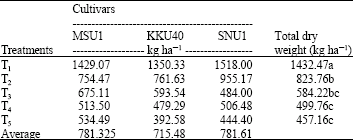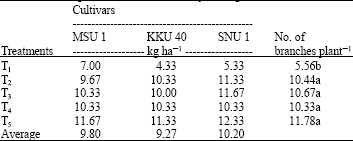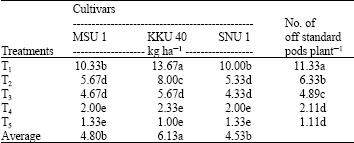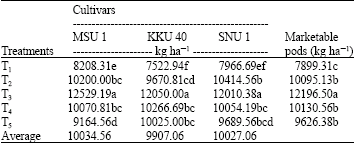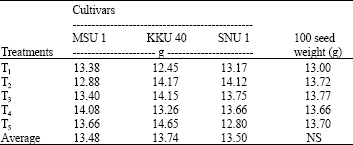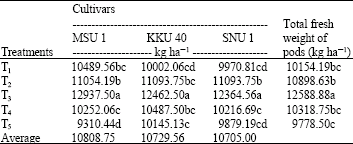Research Article
Effect of Sowing Distances on Edible Pod Yields and Yield Components of Three Vegetable Cowpea Cultivars (Vigna unguiculata L. Walp.) Sesquipedalis Subspecies, Grown in Northeast Thailand
Department of Agricultural Technology, Faculty of Technology, Mahasarakham University, Mahasarakham 44000, Thailand
N. Sinsiri
Department of Agricultural Technology, Faculty of Technology, Mahasarakham University, Mahasarakham 44000, Thailand
M. Silapanont
Department of Agricultural Technology, Faculty of Technology, Mahasarakham University, Mahasarakham 44000, Thailand
S. Seedasod
Department of Agricultural Technology, Faculty of Technology, Mahasarakham University, Mahasarakham 44000, Thailand









